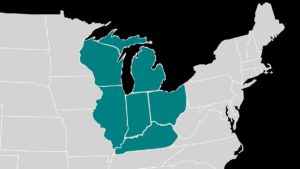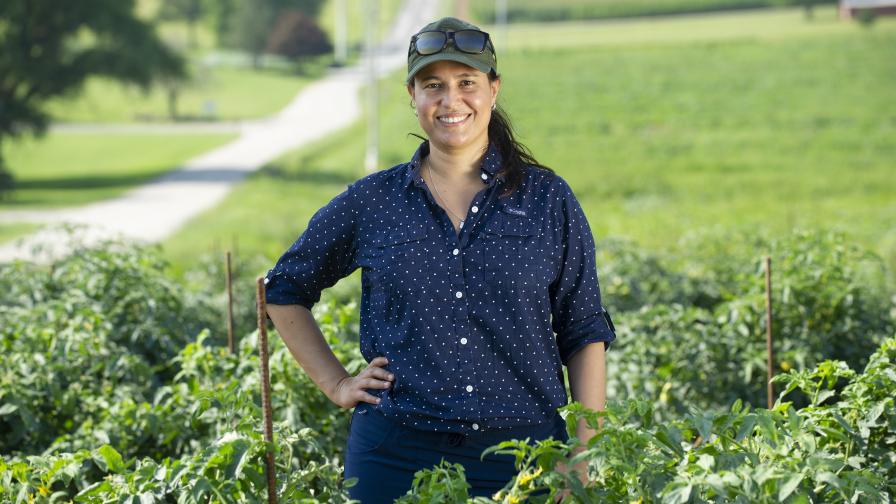How Great Lakes Growers Are Mixing up Crop Choices
 Each region has its unique challenges to growing. The Great Lakes region is blessed with rich soil that allows for a wide variety of crops.
Each region has its unique challenges to growing. The Great Lakes region is blessed with rich soil that allows for a wide variety of crops.
But weather patterns, market demand, and pest pressures are constantly redefining what a grower considers a mainstream crop.
And what is considered a common crop for others can be an unusual one for an individual grower.
American Vegetable Grower® reached out to Michigan State University’s Benjamin Philips about what he has witnessed changing this past couple of years.
His responses illustrate this everlasting shuffle of crops in the Great Lakes.
AVG: Which crops are you seeing vegetable growers adding to their rotation that are a little surprising for your region?
 Phillips: In Eastern Michigan, two big strawberry growers downsized in the last three years because they couldn’t afford the labor, and two other nearby vegetable growers put in a number of new acres to soak up that market gap.
Phillips: In Eastern Michigan, two big strawberry growers downsized in the last three years because they couldn’t afford the labor, and two other nearby vegetable growers put in a number of new acres to soak up that market gap.
Muck soil carrot, onion, and lettuce growers have been adding sweet corn to their rotation for nematode reduction.
One organic grower in my area has been rotating sweet potatoes around tomatoes, cucumbers, and herbs under three connected Haygrove high tunnels.
AVG: Are you noticing which of these less-common crops are more successful, commercially speaking? And which are most problematic?
Phillips: The sweet potatoes under the Haygroves have been a successful venture. They outcompete weeds for a year, and break up the soil well.
It’s always a struggle to rotate tomatoes out of hoop houses, because they turn a profit faster than most other crops. Locally grown Michigan sweet potatoes are a bit of a novelty that people will pay more for, and when grown organically they can bring in good money.
Similarly, muck soil is often used for multiple years for the same high profit crop. Grass crops are employed as a handy tool to break some nematode and disease cycles. Field corn has been the main grass used for this, but a market opportunity opened up to grow higher-value sweet corn.
It has not yet been determined if this opportunity was more profitable than field corn. There are a few factors to consider in the opportunity cost. Field corn is cheap to grow and low value. Sweet corn involves more hand labor without a harvester.
The lettuce grower employed a mechanical harvester to cut down on the opportunity cost for cutting lettuce. The onion and carrot grower planned ahead to hand-harvest sweet corn without having to sacrifice hoeing crews in the onions and carrots.
Strawberries are problematic sometimes because if a vegetable grower decides to build them into their rotation on a limited land base, they are more likely to place them in an area where Solanaceous crops have already been grown. They are both hosts to verticillium wilt, but that is a disease that will disproportionately suppress the returns on a multi-year strawberry investment
Great Lakes Vegetable Working Group Is a Resource for Growers
Ben Phillips is the lead chair the Great Lakes Vegetable Working Group (GLVWG). This collection of researchers, professors, and Extension agents cooperate on projects that matter to the vegetable industry.
The group’s research projects include both single-state and intrastate projects.
Here are a few highlights about the group:
• The primary objectives of the GLVWG are focused on improved flow of information among all components of IPM, with broader understanding and engagement of both scientific and Extension communities across disciplines, crops, and states while improving efficiencies of information exchange and knowledge sharing.
• Members include Extension specialists and researchers from departments of entomology, nematology, horticulture, plant pathology, and weed science primarily at land grant universities. Other members represent commodity groups, grower associations, and industry representatives involved in vegetable production in the Great Lakes region.
• The group has developed a smartphone application titled “Good Bugs +” as a digital companion to The Ohio State University’s “Natural Enemy Field Guide.” Once it is downloaded from iTunes or the Google Play stores, it works without access to the internet.
There are a number of ways growers can search for and gain access the group’s extensive knowledge.
Website. Past projects (from 2005 to 2012) can found there, including presentation recordings and materials.
Twitter. If you’d like to follow conversations between vegetable crop experts, you can find them @GLVeg.
Listserv. The GLVWG maintains a listserv with about 160 members. Listserv participants can share problems and solutions in a timely manner, which is key in vegetable production.










